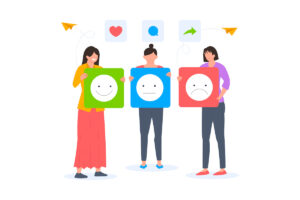One of the top questions I consistently get asked is, “How do I scale my engagement across social?

The bottom line is that meaningful, one-on-one conversation requires human-to-human interaction and a personal touch. It’s the blending of the two that’s an art form—and it’s always evolving.
When you can automate, in the right places, the human touchpoints within any campaign, product release, or general sharing system, you’ve hit the jackpot.
To achieve this, we use the rule of thirds split between automation, sharing, and one-on-one interaction (which is how we approach it at PureMatter, and how I approach it for my individual brand).
Word of caution: while great tools help us automate the process, too much automation of engagement gets us into trouble. The more complex we get with our automation systems, the harder we have to work at humanizing what we do. Unfortunately, the science of automation has taught your target audiences to distrust most marketing.
[Tweet “The science of automation has taught your audience to distrust most marketing. @bryankramer”]
For instance, when you’re doing email triage every morning do you question whether a particular email is from a real person or if it’s an email blast that’s been personalized?
Are you suspicious that the ads you see are retargeted? Do you stop looking at your direct messages on Twitter because all you seem to receive are automated messages? Your audience is just as sick of being bombarded with automation as you are.
In this discussion of automation, let’s also consider the human error factor. Currently, there is no automated system that prevents humans from making mistakes or social gaffes online.
As companies, we’ve been used to having a little space between developing content and distributing it, but digital sharing, especially the immediacy of social, has made many of us wish there were more filters in place to prevent human mistakes from seeping in.
But where should we draw that line? People want us to be more human online, but part of the discomfort many companies have with embracing social business is the possibility of embarrassment due to human error.
Some of the gaffes committed online by corporations have been more than just embarrassing—they’ve been career ending. However, companies are learning to demonstrate humanity, rather than knee-jerk reactions to save face. That’s a good thing.
In the corporate world, though, there’s still a little too much emphasis on appearing perfect. People are surprisingly forgiving of brands when they own up to mistakes.
Unfortunately, some haters out there love to point fingers and jump all over imperfections; but for the most part, people understand that mistakes happen.
Sometimes, however, the tools we use to automate some of our content distribution and sharing processes can exacerbate a mistake.
There are times when you need to turn off automation altogether and just react as a person.





